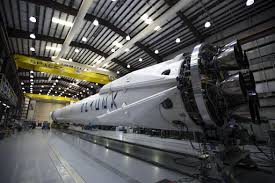Source: analyticsindiamag.com
We have seen machine learning transforming every field that it touches. The field of manufacturing, too, has witnessed many applications of data-driven solutions. Building rockets is unlike any other manufacturing job.
For example, the cost and time it takes to build a decent rocket engine require a multitude of variables. These variables influence how stable the engine is and helps assess other such attributes. A rocket is a combination of more than 1,00,000 individual parts, and electronic equipment joined together meticulously to endure the immense forces of our planet. So, where does AI fit in? Can it overtake the traditional rocket-building methods?
In the next section, we shall look at a few of those solutions and what implications they have:
Finding Stability Of Rocket Engine
A group of researchers from the University of Texas at Austin are developing a machine learning-based framework that blends in scientific computing through a combination of physics modelling and data-driven learning. These ML approaches will then be used to build simulations – or what they call – reduced-order-models or ROM, which can then be used to experiment with different design parameters in a fraction of time.
These reduced-order models help accelerate the designing process and save a tremendous amount of time for the design engineers.
Their techniques are aimed at finding the most stable design for the rocket’s engine. The stability of a rocket’s engine, which must withstand a variety of unforeseen variables during any flight, is a critical design target engineers must be confident they have met before any rocket can get off the ground.
Tuning A Rocket Engine With RL
Of the many things ML could be used for in the case of rockets, their engines seemed to be the crowd favourite. The performance of a rocket boils down to how good the engine is. A team of engineers from Insights Fellow program have chosen a fancier route to improve the engines.
They have employed reinforcement learning (RL) approaches to cut down the time taken for analysis. RL has been applied to create an impactful solution, a control policy for the engines that are as good as what decent control engineers would recommend. This is believed to be several months of trial and error, and brings the rocket to the launchpad much earlier than what it takes for traditional methods.
Using 3D Printing Combined With AI
So far, we have discussed how machine learning is being used to analyse the results and to recommend optimal ones at the post-production of an apparatus. But the engineers at Relativity Space have taken a more ambitious route and have applied ML to monitor the manufacturing of propellant tanks and other large objects. And, they manufacture these large metal bodies using 3D printing techniques!
Apart from Relativity, there are companies like SpaceX, Blue Origin, Rocket Lab that are using 3D printing techniques to print select parts, but the scale at which they are using AI and 3D printing is unprecedented.
Relativity happens to be the first and so far the only company that has blended the advantages of intelligent robotics, software, and proprietary metal 3D printing technology to automate aerospace manufacturing.
These printers use a different printing technique, in which a laser welds together layers of ultra-fine stainless steel dust.
In a recent interview with Wired, Relativity’s co-founder spoke about how they are using AI to improve their manufacturing process. He explained how artificial intelligence tells the printer what to do. Before a print, a simulation of what the print should look like is run. As these vast robotic arms move gracefully to deposit metal, a suite of sensors captures visual, environmental, and even audio data. Relativity’s software then compares the two to improve the printing process.
Along with the use mentioned above, the use of AI for space exploration extends far beyond the garages. Now they are being used by the likes of NASA to explore galaxies and stars. Even the famous mars Curiosity rover is equipped with an AI toolkit, which autonomously tests the rock samples without human intervention. From solving computational fluid dynamics problems to landing the rockets, from computers to launchpads to extraterrestrial missions, AI has found itself in every stage of the rocket building process.
